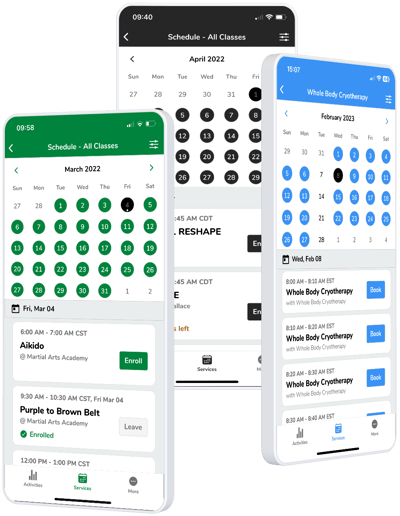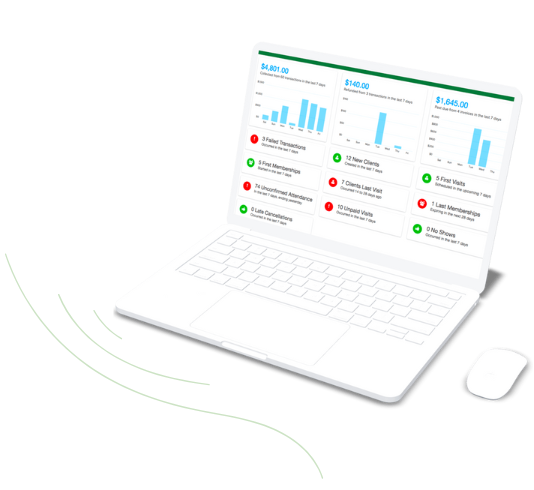Maximize Productivity and Grow Your Business with Automated Solutions
Improve your business management and client experience with Pike13. Empower your staff with the right tools and increase client retention through a streamlined platform.

Maximize Productivity and Grow Your Business with Automated Solutions
Improve your business management and client experience with Pike13. Empower your staff with the right tools and increase client retention through a streamlined platform.
-3.png)
Maximize your business potential with Pike13's trusted scheduling and client management software - The solution for small business owners
Scheduling
Clients can enroll in classes, courses, appointments, and camps. Schedules can be managed from any device.
Client Management
Create client profiles, store waivers, send notifications, reminders, and manage client payments.
Billing
Clients can set up one-time or recurring payments. Missed payment warnings prevent revenue leaks.
Reporting
Built-in client and financial reports measure the health of the business and help you make smart business decisions.
Free Client App
Life doesn't happen behind a desk. Give clients easy access to your schedule through a free mobile app.
Apps & Extras
A variety of tools and integrations power up Pike13 to help you seamlessly run every aspect of business.
Accelerate Your Business Growth
Increase your labor efficiences
Our comprehensive suite of mobile apps, including a check-in kiosk solution, reduces administrative workloads, allowing your team to dedicate more time and attention to delivering exceptional customer experiences
Automate everyday processes
Say goodbye to manual processes and embrace the ease of generating invoices, processing new client registrations, and storing signed waivers—all in one convenient platform
Diversify your product offerings
Our versatile platform simplifies the process of adding new classes, courses, merchandise, and more, allowing you to meet the evolving needs of your customers
Increase your customer retention
Pike13 provides a user-friendly interface for easy class or service bookings, online payments, and communications that enhance customer satisfaction and loyalty

Select your industry to tour the platform
Elevate your business with tailored solutions - Pike13 serves a diverse range of industries, double click on the one most similar to yours.
Let's reach your business goals, together.
Pike13's comprehensive platform helps you achieve your business goals by automating manual tasks and streamlining workflows, allowing you to save time and energy to focus on what matters.
Alerts and Notices
Confirmation Emails
Private Notes
Reminder Notifications
Customizable Pay-Rates
Tiered Bonuses
Recurring Passes
Automatic Emails
Invoices and Billing
The tools you need
Pike13 software is simple because you don't need complicated. Our user-friendly interface offers everything you need to run your business your way, and cuts out all the other noise that makes administration confusing and time-consuming.

The service you want
When you need help, we’re right here for you. All the software functionality in the world means nothing if the company backing it up isn't reliable. Pike13 doesn't just boast 99% uptime for our servers–beating out our competitors by a mile–we also offer the best customer support in the industry.
Experience Pike13's power first-hand with a guided demo
Schedule your call with a platform expert today!
Empower your business with Pike13
Read real-world success stories from small business owners who have found success with our all-in-one platform
The system is dependable and the support is really excellent. They know the system and their response and resolution to issues are some of the best I've ever experienced.
I love Pike13 and my clients really love it too. It’s easy to set up services and plans, overall ease of use is fantastic. It’s very responsive, and I like the business app. It saves me a lot of time!
I've been using Pike13 for years now and I'm completely happy with the product. I have total flexibility creating different plans and packages for the services we offer to our clients.
Log in to your existing Pike13 account
To access your Pike13 site, please log in by clicking the button located to the right of this message. By logging in, you'll be able to take advantage of all the powerful tools and features that Pike13 has to offer.
.png?width=546&height=435&name=morflax-things%20(8).png)
.png)
